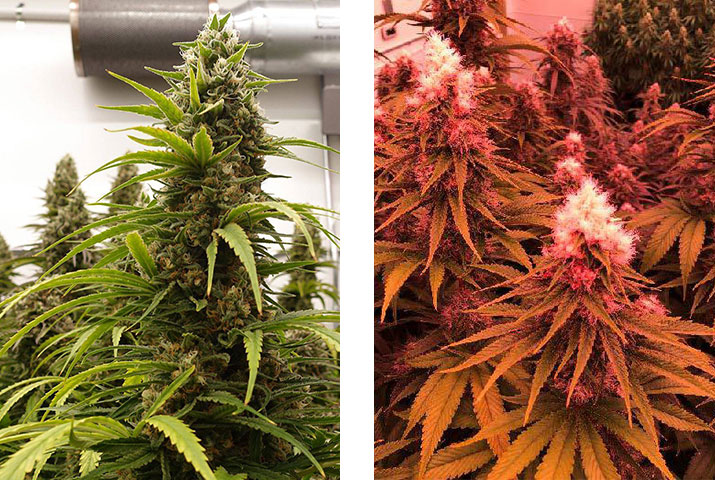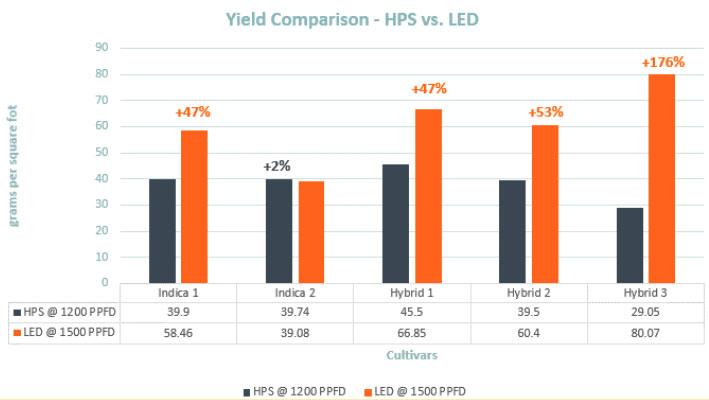
SPYDR SeriesLight Up Your Business to New Heights
A bright and flexible rack lighting solution that maximizes the grow space for higher crop yields and better quality
Whether growing cannabis, food or ornamental plants, the Fluence SPYDR Series was designed for single or multi-tier growers who want to optimize their grow space for the maximum crop yield while producing the highest quality crops.
Compare the SPYDR SERIES
| SPYDR 2x | SPDR 2p | SPYDR 2i | NEW SPYDR 2h* | ||
|---|---|---|---|---|---|
| PPF | 860 µmol/s | 1550 µmol/s | 1700 µmol/s | 2080 µmol/s | 22% Increase in PPF! |
| AC Input Power @277V AC | 342W | 631W | 631W | 782W | |
| Efficacy @ 277V AC | 2.51 µmol/J | 2.46 µmol/J | 2.7 µmol/J | 2.6 µmol/J |
LED BY SCIENCE
Our Product Design is Led by Research
It is well documented in academia that an increase in light intensity correlates to an increase in plant biomass. However, because studies were conducted mostly on leafy greens and herbs, little is known regarding the effect of higher light intensities on cannabis crop production. Proper cannabis research is just now starting to be carried out, led by researchers such as Dr. Bruce Bugbee of Utah State University and teams at the Laval University in Quebec City. The Fluence research team, too, has also sought to understand this photobiological interaction and collaborated recently with Texas Originals Compassionate Cultivation to examine the issue.
To ensure proper research methods, all Fluence research is validated by triple replicate data collection. In this study, Fluence researchers studied three cultivars under three light intensities. With the introduction of higher light intensity, the following results were discovered:

- Light saturation point
Light saturation within cannabis begins around 1800-2000 µmol/m-2/s-1 under our test conditions - Impact on yield
Yield starts to level off at around 1800 µmol/m-2/s-1 and peaked at 2000 µmol/m-2/s-1 - Impact on cannabinoid and terpenes
Cannabinoid and terpene concentration showed an increase of 13% when light intensity rose from 1100 µmol/m-2/s-1 to 1500 µmol/m-2/s-1, but didn’t further increase at light intensities beyond that - Photobleaching warnings
When a higher percentage of red light is added to the spectra, photobleaching causes damage to the plants; therefore, the study concluded that R4 is preferred under high light intensities
The researchers found the most significant impact on yield occurred at 1800 µmol∙m-2∙s-1 , resulting in a 17% increase in yield compared to plants grown under 1100 µmol/m-2/s-1
*Given the dramatic changes in the environmental parameters, we recommend for those interested in pushing light intensity to operate around 1400-1500 umols/m2/s


Grower’s Success
Furthermore, the Fluence Horticultural Services team applied the learnings from our research lab to a commercial growing facility and found similar results. The trial was conducted in an indoor commercial cannabis facility comparing Fluence LEDs at 1500 μmol/m2/s to HPS at 1200 μmol/m2/s with five different cultivars. The purpose of the study was to determine the impact of higher light intensity on plant yield.
After two cycles, the data revealed a significant increase in yield for four of the five cultivars.

The primary takeaways from the trial:

We saw an average of 49% increase in grams per square foot with Fluence LEDs at 1500 μmol/m2/s

A 25% increase in light intensity reduced energy use by 25% due to the efficiency of LEDs compared to HPS

Changes in yield were cultivar-dependent

Director of Horticulture Services
Fluence



Director of Horticulture Services
Fluence



